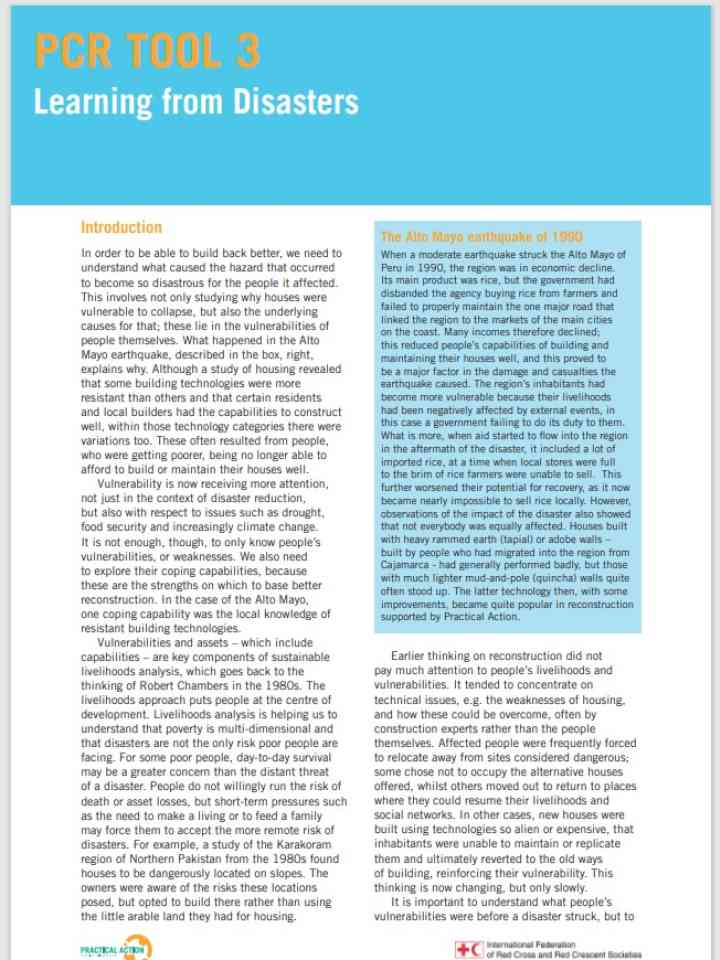The document emphasizes the need to understand vulnerabilities and coping capabilities in communities post-disaster, using the Alto Mayo earthquake as a case study. It underscores that vulnerabilities stem from factors like weakened livelihoods, poor governance, and known risks, and that building resilience requires leveraging local knowledge and sustainable livelihoods analysis.
By assessing structural damage, involving stakeholders, and incorporating indigenous knowledge, communities can rebuild in a more resilient manner. It also highlights the multi-dimensional nature of poverty and the importance of addressing day-to-day survival concerns alongside disaster risks, advocating for integrated approaches that focus on rebuilding livelihoods and local markets to create sustainable resilience in the face of future disasters.
Explore further
